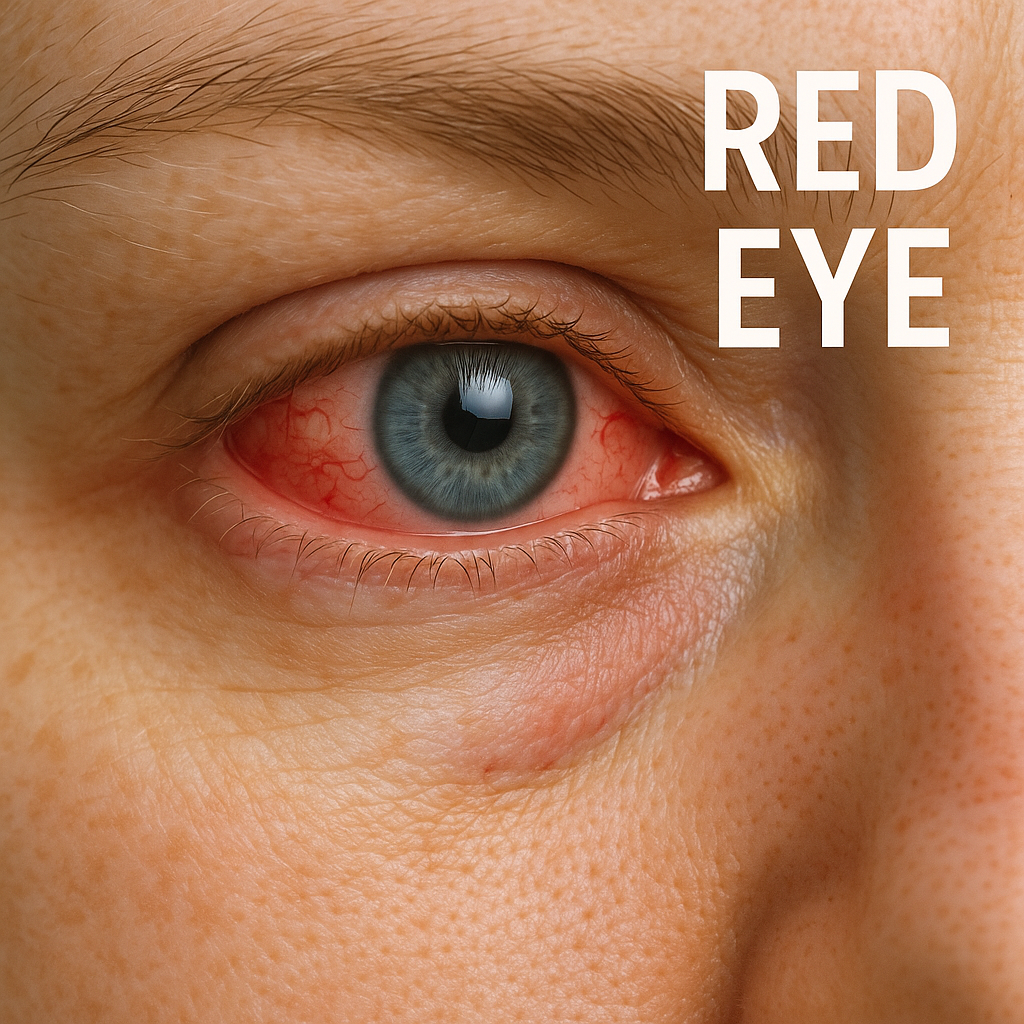Understanding Red Eyes.
Understanding Red Eyes: Causes, Treatment, and Prevention
It’s hard to miss the telltale sign of red eyes. Whether you have bright blue eyes or dark brown, bloodshot eyes stand out like a warning flag. That redness often signals something’s off, a sign that your eyes need attention. In fact, red eyes—commonly referred to as "red eye"—can be a symptom of several eye conditions, and addressing the underlying cause is essential for your overall health. After all, your vision plays a vital role in your quality of life.
Red eyes occur when the blood vessels in the surface of your eyes become swollen, giving them that familiar, irritated appearance. In most cases, you won’t feel pain, but that doesn’t mean the issue should be ignored. While it might be temporary—like after a long night or staring at a screen for too long—the root cause still matters. Let’s take a closer look at why your eyes might turn red and how to keep them healthy.
Common Causes of Red Eyes
Contact Lenses
Contact lenses are a common culprit when it comes to bloodshot eyes. While they’re a great solution for vision correction, they can irritate the delicate surface of your eye, especially if they’re not properly fitted or if they’ve been worn for too long. To avoid irritation, make sure to follow proper hygiene practices, check the condition of your lenses regularly, and never over-wear them. If you notice any signs of infection, consult your optician for advice. Using lubricating eye drops can also help prevent further irritation.Allergies
If you’re prone to allergies, you may notice red eyes along with other symptoms like itching or swelling. Allergic reactions trigger inflammation in the eyes, leading to that familiar bloodshot appearance. The best way to combat this is by identifying and managing the allergens that trigger your symptoms. In many cases, allergy eye drops can help keep your eyes moist and provide relief from discomfort.Dry Eye Syndrome
Spending long hours in front of a screen or being in dry, air-conditioned environments can contribute to dry eye syndrome. When your eyes don’t produce enough natural lubrication, they can become irritated, causing redness and discomfort. Using moisturizing eye drops can alleviate the symptoms and help keep your eyes comfortable throughout the day.Conjunctivitis (Pink Eye)
Conjunctivitis, or pink eye, is another common cause of red eyes. This condition, which can be caused by bacteria, viruses, or allergies, leads to inflammation and irritation in the eye. If you suspect you have conjunctivitis, it's important to seek medical advice to prevent the infection from spreading and to ensure proper treatment.
When to Seek Professional Help
Most cases of red eyes are harmless and temporary, but it’s always wise to take them seriously. If your red eyes persist or are accompanied by pain, discharge, or changes in vision, it’s important to consult an eye care professional. Regular eye exams are also key to identifying potential issues before they lead to more serious vision problems.
Eye Drops: A Cure and Prevention
One simple way to manage red eyes is with eye drops, which can hydrate your eyes and help reduce redness. However, it’s essential to choose the right product. Don’t just grab any over-the-counter drops. Look for those that are well-reviewed, proven effective, and formulated with natural ingredients. Quality should always be your priority over price. A trusted eye drop brand can keep your eyes clean, healthy, and free from irritation.
Final Thoughts
Red eyes are usually a temporary issue, but they can signal a variety of conditions that require attention. Whether caused by contact lenses, allergies, or dry eyes, it's crucial to understand what’s behind the redness and take the right steps to address it. Your eyesight is precious, so don’t take any chances. Keep your eyes healthy with regular checkups, good hygiene, and quality eye care products.

